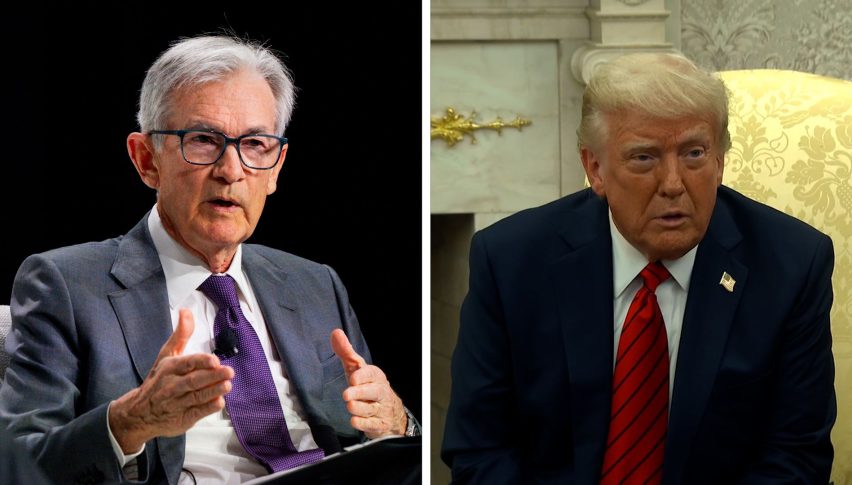Donald Trump Ramps Up Pressure for Rate Cuts, but Jerome Powell Isn’t in a Hurry
Waller, who was a staunch hawk during the Fed’s aggressive tightening in 2022, is now the first to push for rate cuts.

Quick overview
- Jerome Powell emphasizes the need to prevent a temporary spike in inflation from becoming a lasting issue, despite internal dissent within the Fed.
- The Fed has decided to keep interest rates unchanged, but significant revisions to economic forecasts indicate rising friction among members.
- Fed Governor Christopher Waller publicly disagrees with Powell's cautious approach, advocating for immediate rate cuts, signaling a shift in the Fed's unity.
- Concerns arise about the politicization of monetary policy, particularly with Waller's alignment with Trump's demands and speculation about potential leadership changes.
“Our job is to make sure that a temporary spike in inflation doesn’t turn into a lasting inflation problem,” said Jerome Powell. Beneath the surface, a growing debate within the Fed is beginning to emerge — one that may soon spill into public view.

The Fed has just concluded its fourth meeting of the year and, as with the previous ones, decided unanimously to keep interest rates unchanged. No surprises. At first glance, nothing has changed. But behind the scenes, dissent is building. The official dot plot — the Fed’s closest thing to a forward-looking roadmap — still shows two quarter-point rate cuts before the end of 2025, the same as in March. However, a deeper look into the supporting economic projections reveals significant revisions and rising internal friction.
The central bank downgraded its GDP growth forecast by 0.3 percentage points and revised its inflation forecast upward by the same amount. The recent cooling of price increases — and Trump’s partial retreat on reciprocal tariffs — hasn’t eased Powell’s concerns. “We expect a significant increase in inflation over the coming months,” the Fed Chair said. In fact, due to the tariffs, the Fed now projects the PCE deflator — which stood at 2.1% in April — will climb to 3% by year-end.
Trump is not Happy with Powell
“Wait and see” has been Powell’s preferred stance since the January meeting — at least until there’s a clearer picture of the final cost and who will ultimately bear it. Trump’s loud calls for an aggressive rate cut — slashing interest rates from 4.50% to 2–2.5% — leave him unmoved. “Our job is to make sure that a temporary spike in inflation doesn’t become an inflation problem,” Powell repeated.
Not everyone shares that view. Trump, clearly, doesn’t. And neither do all members of the Fed. Powell himself acknowledged as much — without naming names. “We have a pretty healthy diversity of views on the FOMC. People can look at the same data and assess the risks differently.”
Indeed, just two days after the meeting, Fed Governor Christopher Waller publicly expressed his disagreement with the “wait and see” approach. We’ve seen enough, he said — there’s no reason to keep waiting. Rate cuts, in his view, should begin at the next meeting in late July. And to leave no doubt, he made his position clear in advance: that will be his vote, even if no one else joins him.
This marks the end of unanimity within the Fed. In three weeks, the meeting minutes will confirm the range of differing views now surfacing inside the institution.
A Shadow Fed?
Is monetary policy becoming politicized? Waller, who was a staunch hawk during the Fed’s aggressive tightening in 2022, is now the first to push for rate cuts — effectively aligning himself with Trump’s public demands. It was Trump who nominated him to the Board of Governors in December 2020. His term runs through 2030. Powell’s current term as Fed Chair expires in May 2026. Trump has already said he won’t reappoint him — and that he plans to announce a replacement soon.
Powell has no intention of stepping down early. But the unfolding strategy seems clear: to set up a shadow Fed, with a handpicked successor quietly signaling a policy shift from the sidelines. Hardly a model of institutional seriousness.
Is Waller aiming to replace Powell? Presumably, yes. Markets already place him in a hypothetical shortlist that includes former Governor Kevin Warsh and Trump’s ex-advisor Scott Bessent. Of the three, Waller is by far the strongest candidate. He spent over a decade as a research economist at the St. Louis Fed and joined the Board five years ago. His tone — especially in recent statements — is that of someone already playing the role of Chair.
For the sake of the institution, though, it would be wise for Waller to project a more independent image — one that distances him from the role of Trojan horse or potential puppet of the White House.
- Check out our free forex signals
- Follow the top economic events on FX Leaders economic calendar
- Trade better, discover more Forex Trading Strategies
- Open a FREE Trading Account